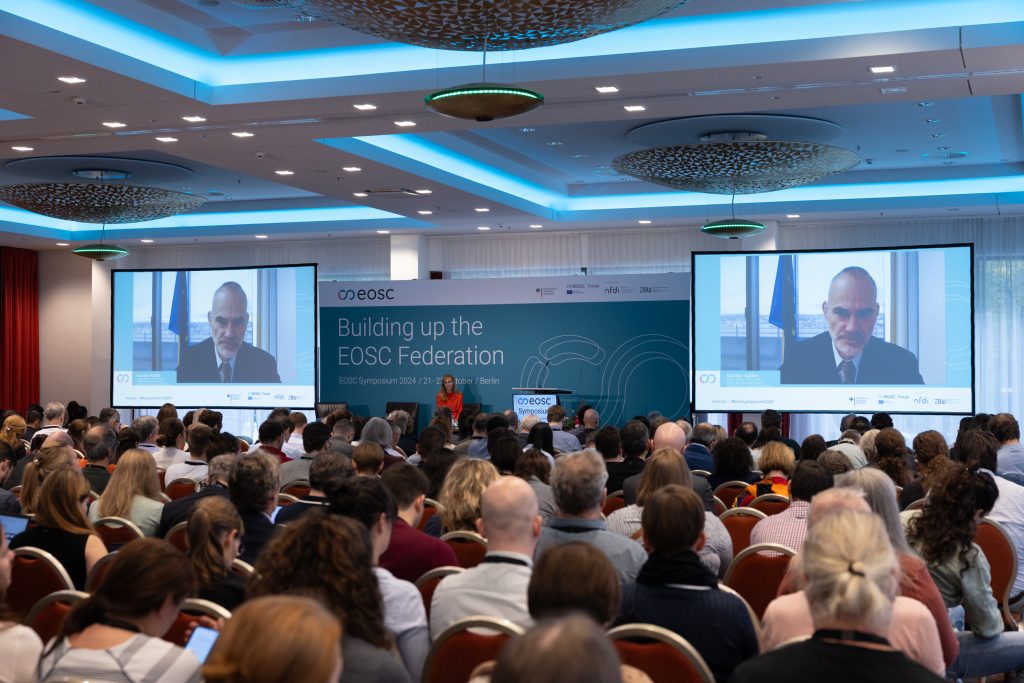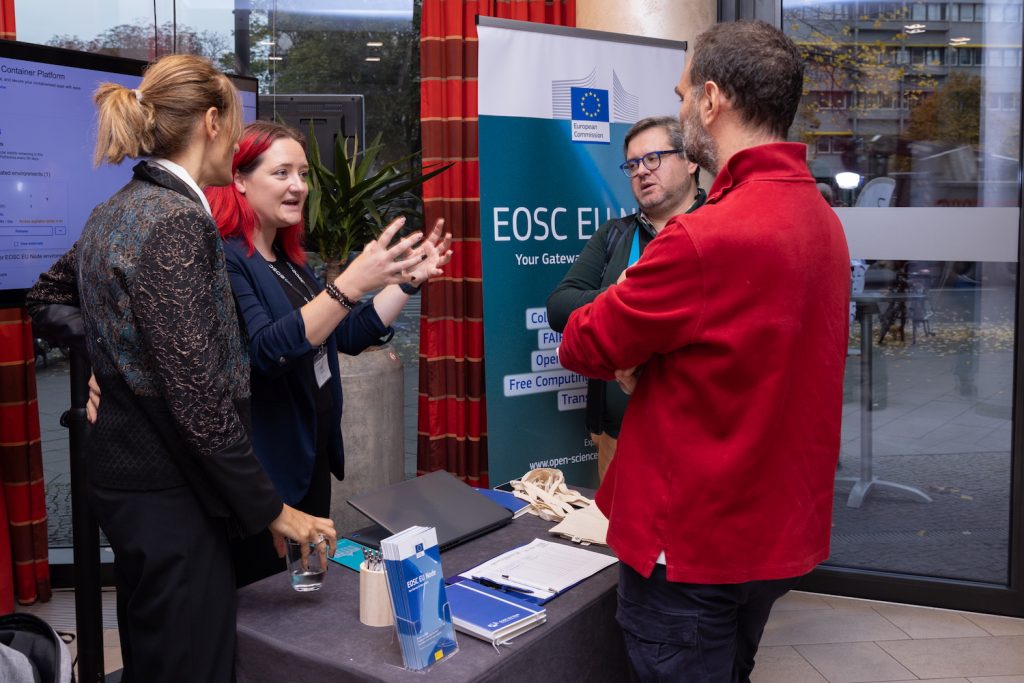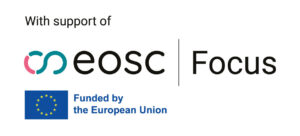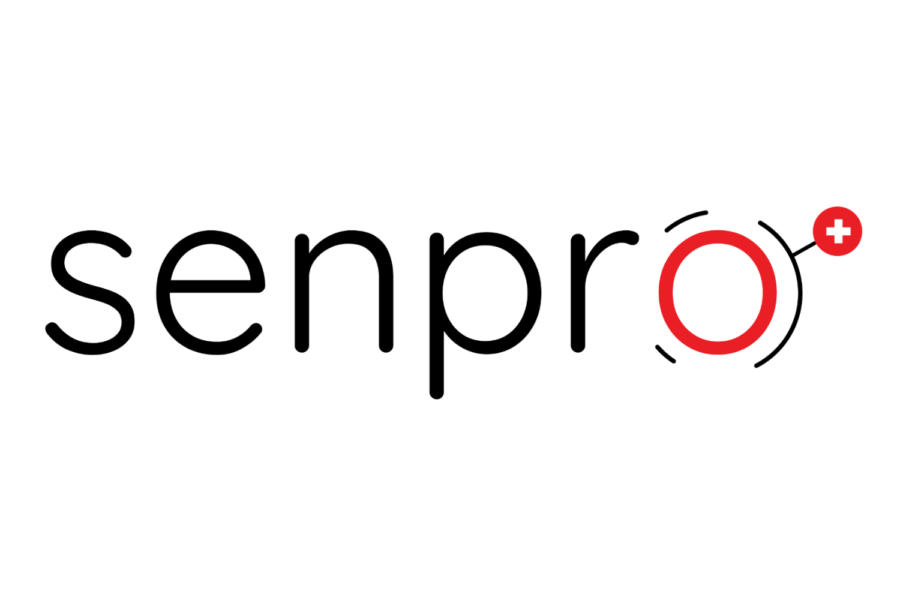BERLIN – On 22 October 2024, participants at the EOSC Symposium in Berlin gathered in the plenary to celebrate a significant milestone, the official launch of the EOSC EU Node. This moment marked the introduction of the Node’s service offerings, which became accessible to users that afternoon.
As the first building block in the EOSC Federation, the EOSC EU Node aims to accelerate the adoption of Open Science principles across Europe. Gustav Kalbe, Acting Director of the Directorate‑General for Communications Networks, Content and Technology (DG CNECT), announced the launch, highlighting its importance for researchers and the broader scientific community. Next, Peter Szegedi, Policy Officer at DG CNECT, presented the capabilities of the EOSC EU Node, covering everything from bulk data transfer to virtual machines and interactive notebooks.
By the conclusion of the Symposium on 23 October 2024, roughly 300 users had registered to explore the newly available services, demonstrating the immediate interest and demand for the Node.



Photographs by Andrew Grauman
Services offered through EOSC EU Node
The robust suite of resources made available via the EOSC EU Node provides researchers with a unified and secure environment to conduct their work, streamlining processes that were previously fragmented across various platforms. Further details about the services and tools offered by the Node can be found in the European Commission’s announcement regarding the launch.
Resources from the Symposium
Participants also had the opportunity to visit the EOSC EU Node information booth, where they could engage with representatives to explore potential applications and ask questions.
The Symposium featured several dedicated sessions focused on the EOSC EU Node and the broader topics related to the EOSC Federation. Key takeaways and slides from these sessions are available on the Symposium outcomes page. Additionally, a summary of the Symposium highlighting the EOSC EU Node can be found on the European Commission’s website.





